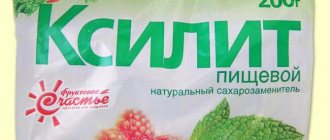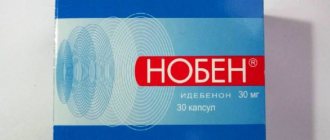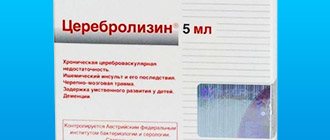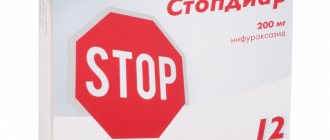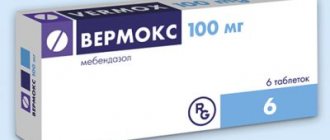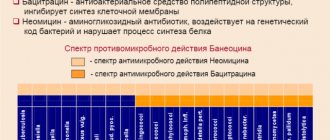Choleretic drugs for bile stagnation
Taking into account the leading mechanism of action of the drugs included in this group, they are conventionally divided into several types:
- choleretics;
- cholekinetics;
- Cholespasmolytics.
Conditional separation is called due to the fact that many choleretic agents have a complex effect, that is, they simultaneously enhance the production of bile fluid and facilitate its entry into the duodenum.
Choleretics
Choleretic drugs have the following effects on the human body:
- stimulate the formation of bile fluid (reflexively, influencing intramural nerve cells, and hormonally, enhancing the production of intestinal hormones);
- stimulate the formation of hepatocytes;
- enhance the osmotic filtration of electrolytes into the capillaries of the gallbladder;
- increase the amount of salts present in the bile fluid, reducing its lithogenicity;
- increase the production of lipase and bicarbonates by the pancreas;
- reduce the intensity of the fermentation process in the intestinal environment, adjusting the composition of the flora.
Representatives of the group of choleretics and the characteristics of their effects on the body can be placed in the table:
| A drug | Description |
| Hologon | Enhances the synthesis of primary bile acid, accelerates the production of fluid and acid salts. The drug also helps to enhance the filtration of electrolytes in hepatocytes, normalizes blood circulation in the liver, and has a diuretic and laxative effect. |
| Allohol | Helps stimulate the secretion of bile fluid and acids, reduces lithogenic properties, reduces flatulence, fermentation, and has a laxative effect. |
| Holenzym | Accelerates bile production, but has almost no effect on its volume. Has a cholespasmolytic effect. |
| Liobil | Helps reduce the level of cholesterol in bile, improves hydrolysis and absorption of fats by the small intestine. |
Cholekinetics
Drugs from the group of cholekinetics irritate the receptors of the intestinal mucosa, which causes a reflex increase in the production of endogenous cholecystokinin. The latter is a polypeptide produced by cells of the duodenal mucosa.
The polypeptide stimulates contraction of the gallbladder and normalizes the production of digestive enzymes by the pancreas. After cholecystokinin enters the bloodstream, it penetrates the capillaries of the bladder, activating the smooth muscles and relaxing the sphincter of Oddi. This leads to increased flow of bile fluid into the duodenum, preventing stagnation.
Choleretic - choleretics: stimulants of education
The most well-known mechanism of action of choleretics is the receipt of reflexes from the intestinal mucosa. This is especially true for medications containing natural bile, namely bile acids. They have a remarkable effect on increasing the secretion of bile by hepatocytes. In addition to the general increase in the amount of bile, the content of bile acids in it increases, and the gradient between bile and blood, being an osmotically active value, increases the filtration of water and electrolytes into the bile capillaries. Bile begins to move faster through the bile ducts, which reduces the possibility of its stagnation, cholesterol precipitation and the formation of gallstones. Thus, choleretics are not only drugs that prevent gallstone disease, but also drugs that increase the ability of digestion to digest fats and improve motility of the small intestine.
Agents that stimulate the formation of bile from its precursors can be natural, or true, synthetic, as well as herbal choleretic agents that have a bile-forming effect. True choleretics are often products of animal origin. The most popular choleretic drugs from all subgroups will be listed below. Of these, Allochol is a true choleretic, Odeston is a synthetic drug, and Holosas is a choleretic drug consisting of one herbal component.
Allohol
Rating: 4.9
Allochol is perhaps the most popular and accessible “folk” choleretic medicine. This is a combined remedy, and Allochol contains dry cattle bile, dry nettle and garlic, as well as activated carbon. All these components together give a stronger choleretic effect than just bile alone. Allochol is able to increase contractions (peristalsis) of the intestines, and due to the presence of activated carbon, which has an antimicrobial and sorption effect, it reduces the processes of putrefaction and fermentation that can occur in the intestines.
Allochol is indicated in the complex therapy of chronic cholecystitis, cholangitis, and atonic constipation. It is usually taken in two tablets, after meals, so that it has the maximum choleretic effect. If the patient is prescribed fractional meals, then the drug should be taken no more than 4 times. This intake must be followed for a month, and then the dosage is halved. The course can be repeated, but between them it is necessary to take breaks of at least 2 months.
Allochol is produced by the domestic company Pharmstandard, and a large package containing 50 film-coated tablets costs only 42 rubles. In some pharmacies you can find it for 33 rubles, and the smallest package of 10 tablets costs only 12 rubles.
Advantages and disadvantages
Allochol works, “choleretic” quite mildly, unlike synthetic drugs. After all, it contains natural bile. But, nevertheless, at a sufficiently high dosage it can cause diarrhea and abdominal flatulence, and Allochol is contraindicated in acute ulcers, mechanical (obstructive) jaundice, and if there are stones in the gallbladder. This leads to a sharp increase in secretion, and if there is nowhere for it to go, then the bladder may expand and even rupture with the development of peritonitis. Allochol is contraindicated in acute and subacute hepatitis - inflammation of the liver, and in its progressive dystrophy. But this choleretic drug, taken according to indications, acts gently and helps improve digestion and normalize stool in a wide variety of groups of patients.
Gimecromon (Odeston)
Rating: 4.8
Odeston belongs to the group of infrequently used synthetic choleretics, and it has a fairly pronounced choleretic effect. This product contains hymecromone in the form of an active substance, and is available in the form of tablets weighing 200 mg each.
Odeston reduces the phenomenon of stagnation, reduces the processes leading to the formation of cholesterol stones, that is, reduces the loss of cholesterol in the form of crystals, and is indicated in the treatment of diseases such as biliary dyskinesia of the hyperkinetic type, chronic cholecystitis and cholangitis. It is prescribed after surgery on the gallbladder, and due to a chronic decrease in bile secretion.
Odeston is used half an hour before meals, 1 or 2 tablets, three times a day. The daily dose should not exceed 6 tablets. The course of treatment is about 2 weeks. It is not recommended to skip a dose, but you should not make up for it later by taking a double dose at once. Odeston is produced by the Polish company Polfa.
Advantages and disadvantages
Like all choleretic drugs, Odeston has contraindications. These include obstruction formed in the bile ducts, the phenomenon of renal and liver failure, gastric ulcers, bleeding disorders and childhood. The drug has side effects due to its rather strong choleretic effect. This can lead to bloating, diarrhea, allergic reactions and abdominal pain. Since the product is synthetic, many doctors note, along with its strong effect, that it is somewhat rough: Odeston is not intended for mild stimulation.
Holosas and other herbal remedies
Rating: 4.8
Herbal choleretic drugs have a complex and complex effect on the gastrointestinal tract as a whole and on its organs individually. They contain phytosterols, essential oils, phytoncides, sometimes vitamins, flavones and various resins. For example, Holosas, like rosehip syrup, immortelle and Holagol increase the secretion of bile, while simultaneously improving its fluidity, that is, reducing viscosity.
Also, plant components increase the content of chelates, or bile acids, in bile. These drugs can increase the tone of the gallbladder muscles, and at the same time relax the smooth muscles of the bile ducts, as well as the sphincters of Oddi and Lutkens. Choleretic agents improve the secretion of the stomach and pancreas, improve the quality of gastric juice enzymes, and when intestinal tone decreases, they improve peristalsis. Some components, for example, tansy and mint have an antimicrobial effect, and rose hips have an anti-inflammatory and diuretic effect. Usually, various tinctures and extracts are classified as choleretic, but you can also prepare decoctions from herbal collections. They should be used half an hour before meals 3 times a day, respectively, with more frequent and smaller meals, the frequency and dosage of choleretic herbal remedies is determined by the doctor.
Perhaps, Holosas is one of the most delicious and pleasant medicines in general, since it is a concentrated syrup of rose hips with sugar. In some cases, if it is not hidden from small children, they may drink the entire bottle, and after that they will suffer from profuse diarrhea due to an overdose, but still, nothing bad will happen to them anymore.
Holosas is indicated for various viral hepatitis, for inflammation of the bile ducts and bladder, for poisoning with various drugs, medications that are metabolized, secreted into bile, it is indicated for poisoning with alcoholic beverages. Holosas can be prescribed as a general tonic and for vitamin C deficiency.
It should be used 2 to 3 times a day, adults - 1 teaspoon per dose, and children - half a teaspoon or even less. Holosas is produced by the domestic company Altaivitamins CJSC, and the cost of one 140 ml bottle is on average 140 rubles.
Advantages and disadvantages
Holosas is a natural herbal monomedicine, and the only contraindications will be individual intolerance, as well as severe diabetes mellitus, since Holosas contains sugar. The drug has no side effects, again with the exception of individual intolerance. Few people will experience unpleasant side symptoms from the delicious rosehip syrup. This remedy is inexpensive, Holosas can be added to boiling water and drunk for general strengthening purposes. Taking one teaspoon of Holosas completely satisfies the daily need for ascorbic acid.
Sibektan
Rating: 4.8
Sibektan is a complex herbal medicine produced by the domestic company Pharmacenter Vilar. It contains dry extracts of birch, St. John's wort, silymar extract (or dry extract of milk thistle fruits), dried flowers of common tansy, or tanacehol extract. The drug, in addition to its choleretic effect, protects liver cells, has a hepatoprotective effect, as well as a membrane stabilizing and antioxidant effect.
It can be used for hypotonic type gallbladder dyskinesia, chronic cholecystitis and chronic persistent hepatitis. The drug is also used in the complex treatment of liver cirrhosis and fatty degeneration of alcoholic origin. For adults, the drug is prescribed two tablets 4 times a day for a month, Sibektan is taken 20-40 minutes before meals.
Advantages and disadvantages
The drug is relatively inexpensive, has a mild effect; among the contraindications, general contraindications to choleretic drugs should be taken into account, that is, cholelithiasis. Sibektan is not used in children under eighteen years of age; the drug is not prescribed to pregnant and lactating women, as well as to persons with individual intolerance. Otherwise, the drug containing choleretic herbs is very good, but not as a monotherapy, but in complex therapy, for example, with the same bile acids.
Ursodeoxycholic acid (Ursosan, Ursofalk, Urdoxa, Ursodez)
Rating: 4.8
Ursosan is a representative of a large group of drugs containing bile acids. They improve bile levels, the bile-forming function of hepatocytes increases, and these drugs not only prevent cholelithiasis, but also in some cases dissolve existing cholesterol stones in the gallbladder. UDC, or ursodeoxycholic acid, which is part of Ursosan, also lowers the cholesterol content in bile. And one of the important indications for prescribing this remedy will be the dissolution of gallstones, if they are small in size and consist of cholesterol. You can try to treat the patient conservatively, or you can supplement Ursosan with a surgical or shock wave (distant lithotripsy) method of treating cholelithiasis.
Ursosan is produced by Promed Prague, from the Czech Republic, and capsules containing 250 mg of ursodeoxycholic acid will cost from 750 to 850 rubles. per pack of 50 capsules. The drug can be used for uncomplicated gallstone disease, for the prevention of recurrent stone formation, for various forms of chronic hepatitis, and even for primary biliary cirrhosis and primary sclerosing cholangitis. The medicine is indicated in the complex disease of non-alcoholic and alcoholic fatty liver, for the treatment of chronic viral hepatitis and for biliary dyskinesia.
The medicine should be prescribed in various dosages. So, to dissolve cholesterol stones, a patient can be given Ursosan up to 15 mg per kilogram of weight, that is, a patient weighing 100 kg will receive 1500 mg daily, or one and a half grams, or 6 tablets. Accordingly, after 8 days the package of 50 tablets will run out. And the dissolution of stones is an indication for long-term treatment: 6 months, and even one year, until the stones are completely dissolved. Therefore, the patient uses four packages in a month, and a monthly course of treatment will cost more than 3,000 rubles, so it is necessary to immediately assess your financial capabilities.
There is also Ursosan Forte, when the tablets contain twice the dosage: 0.5 g. The largest package of 100 such tablets will cost an average of 3,000 rubles, produced by the same company. Similarly, this package will also last a patient weighing 100 kg for a month, 3 tablets per day.
For chronic hepatitis and pathologies of the biliary tract, there are similar dosages, which are calculated by the doctor also depending on body weight.
Advantages and disadvantages
In some cases, long-term intake of bile acids significantly improves digestive function and quality of life in many diseases, for example, viral hepatitis and cirrhosis. However, the contraindication would be:
- the presence of X-ray positive calcium gallstones that will not dissolve;
- non-functioning gallbladder;
- decompensated stage of liver cirrhosis, when only a liver transplant can save a person;
- acute inflammatory diseases of both the bile ducts and bladder, and the intestines;
Ursosan is not prescribed to children under three years of age.
The most common side effects were diarrhea or softening of the stool. The medicine should not be taken for chronic and acute liver and kidney failure, as well as for gallstones of non-cholesterol origin. But cholesterol stones must also be small, up to 2 cm, and the patency of the cystic and common bile duct must be preserved to maintain effective bile dynamics. During the treatment of cholelithiasis, as prescribed by a doctor, liver transaminases - ALT and AST are regularly determined, and the effectiveness of treatment is monitored according to ultrasound of the gallbladder. Ursodeoxycholic acid is a product with internationally proven effectiveness:
Choleretic tablets for bile stagnation
There are many drugs with a choleretic effect in the form of tablets, the most popular of which can be placed in the table:
| A drug | Description |
| Odeston | The main active ingredient is hymecromone, which is involved in the production and excretion of bile fluid, relaxes the ducts, and reduces spasms. Prescribed in the presence of a stagnant process and to reduce the risk of the formation of cholesterol plaques. |
| Nikodin | Among the components are derivatives of formaldehyde and amidanicotinic acid. Used for congestive processes, inflammation in the gallbladder |
| Oxafenamide | The active substance is osalmide, which has a pronounced choleretic and antispasmodic effect. Increased bile production and relaxation of the bile ducts eliminate congestion. |
| Flamin | It contains immortelle extract, which has choleretic, antispasmodic and antibacterial effects. |
About hydrocholeretics
Some table medicinal mineral waters are called hydrocholeretics. They simply reduce the thickness and viscosity of bile, and make it more fluid. Unlike ordinary water, when mineral water is absorbed in the intestinal lumen and penetrates into the portal bloodstream, it is absorbed by liver cells first and increases the pressure in the bile ducts by osmosis.
Essentuki-17, Essentuki-4, Naftusya, Slavyanovskaya and Smirnovskaya mineral water work great. In addition to increasing pressure in the bile ducts, the reabsorption of water and electrolytes in the gallbladder and biliary tract is also significantly reduced, which also reduces the potential for lithogenicity, or the possibility of gallstone formation.
Also, the effect of mineral water on the bile ducts depends on the so-called sulfate anion, or sulfuric acid residue, SO4, which is usually combined with sodium and magnesium cations. These sulfuric acid salts - magnesium and sodium sulfate - have a pronounced choleretic effect. Many metal cations do useful work. Thus, calcium (Ca2+) forms a complex compound with bile acids, which significantly reduces the likelihood of poorly soluble bile sediment, which contributes to the subsequent formation of stones. Such mineral salts make bile more fluid, and in its colloidal state it becomes more stable. Mineral waters should be consumed 30 minutes before meals, preferably warm and with gas released, if any.
Choleretic herbs for bile stagnation
Bile fluid is involved in the digestion of fats that enter the body with food. You can improve the composition and performance of the liquid by taking products based on natural herbs, especially corn silk, milk thistle, and tansy.
Many of the herbs are involved in bile production. These are dandelion and celandine. In addition, they dilute it, improve the functioning of the bladder, and normalize the outflow of fluid into the duodenum. Natural components strengthen the muscular apparatus of the bladder and relax the walls of the ducts.
No less effective are products based on birch leaves, which are involved in improving the flow of bile fluid into the intestines and have a pronounced anti-inflammatory effect.
Self-treatment with choleretic herbs is not recommended. Although they have a natural composition, they can still cause negative reactions in the form of allergic rashes. Contraindications to herbal therapy include jaundice. In this case, the bile ducts narrow, causing complications for the liver.
Other restrictions are:
Choleretic folk remedies for bile stagnation
Based on herbs, various remedies are prepared for oral administration, which help relieve spasms, improve the production and outflow of bile fluid, and restore bladder function:
- mint and celandine: take dried raw materials in equal parts, 2 tbsp. pour boiling water in a volume of 250 ml, leave to infuse for an hour, strain, take 125 ml in the morning and evening;
- nettle, hop cones, wormwood, immortelle: take 1 tbsp. collection, pour 200 ml of hot water, leave for an hour, strain, take 75 ml before meals;
- immortelle and St. John's wort: take immortelle 1 tbsp. and St. John's wort 2 tablespoons, mix, pour 400 ml of boiling water, leave for 2 hours, strain, take 100 ml 4 times a day;
- coriander, mint, immortelle: take 4 tbsp. coriander, 2 tbsp. remaining ingredients, pour 250 ml of hot water, leave for 30 minutes, strain, take 100 ml before meals;
- mint, three-leaf watch, immortelle: 1 tbsp. collection, pour 200 ml of cold water, put on fire, boil for 10 minutes after boiling, remove from heat, cool, strain, take 100 ml 2 times a day before meals;
- yarrow, mint, three-leaf watch: 2 tbsp. collection, pour 200 ml of boiling water, leave for an hour, strain, take 100 ml twice a day before meals;
- tansy, calendula, chamomile, yarrow: mix ingredients, take 2 tbsp. collection, pour 300 ml of boiling water, leave for an hour, strain, take 100 ml three times a day.
Any collection should not be taken if there are stones in the bile ducts.
Food
If you consume foods with a choleretic effect every day, you can forever forget about problems with the biliary tract. Such food enhances fluid production and accelerates its entry into the intestines.
The daily diet should include 80-90 g of vegetable fats, which are found in sunflower, olive, corn, and peanut oil. The greatest benefit comes from olive oil, which improves digestive function in general. Heat treatment of oils is not recommended. They should be consumed in their pure form, for example, dressing vegetable salads.
Products containing ascorbic acid have a choleretic effect. Their additional function is to prevent the formation of stones in the gallbladder. Useful to use:
- celery, rhubarb, spinach, dill;
- carrots, tomatoes;
- beets, cauliflower, other cruciferous vegetables;
- lemons, oranges, grapefruit, sour fruits and berries.
Some seasonings and spices also have a choleretic effect. These include ginger, which is consumed in freshly grated form, that is, in powder form. Turmeric and chicory are useful.
A little about bile
Our bile is produced by hepatocytes, or liver cells. Human hepatocytes are truly tireless workers, they work day and night. Hepatocytes neutralize harmful substances, synthesize antibodies and proteins, take part in the synthesis of coagulation factors, and in all types of plastic metabolism. And, in addition, they continuously produce bile.
Bile, formed in hepatocytes, at their biliary poles, gradually penetrates into increasingly larger intrahepatic ducts, finally into the common bile duct, and for consumption and storage it is transported to the gallbladder. The lining of the gallbladder has the ability to absorb water, and therefore the bile in the bladder is concentrated several times, and can be ten times stronger than the fresh one that was originally formed.
During digestion, bile gradually penetrates the duodenum and actively takes part in the digestion and absorption of fats. Bile enters the intestines using special mechanisms, both nervous and reflex. Cholecystokinin-pancreozymin, produced in the intestine, actively participates in them. As soon as stomach contents enter the intestine, cholecystokinin is released, causing the gallbladder to contract and empty. Moving through the intestines, most of the bile is absorbed through its walls, the rest is removed with feces, about 30% of the resulting bile. You can learn more about the physiology of digestion and bile.
What does our bile consist of?
about 70% of it are so-called bile acids: cholic, chenodeoxycholic, lithocholic, ursodeoxycholic and others. Bile contains quite a lot of phospholipids (more than 20%) and proteins (about 5%). Cholesterol is present in bile, about 4%, and bilirubin in the amount of 0.3%.
Bile acids are very important
. Firstly, it is the end product of cholesterol metabolism, and secondly, it is a very important means of digesting fats in the intestines. Bile acids cause emulsification and absorption because lipids, or fats, are water insoluble, but they are highly soluble in bile acids. The absorption of vitamins, which we classify as fat-soluble, also depends on the presence of bile acids in the intestines. These are vitamins A, D, E and vitamin K. If a person has a deficiency of bile acids, then he may have symptoms of vitamin deficiency of the above vitamins. The pancreas will also have difficulty working and digesting food, since pancreatic enzymes secreted by the pancreas are activated in the presence of bile.
It improves intestinal motility and increases the production of digestive hormones. Its role in binding and removing cholesterol from the body and the breakdown product of hemoglobin contained in the blood is very important. It's called bilirubin. Since this substance is not able to be filtered through the glomeruli, bilirubin is excreted through bile and also leaves the body with feces.
Every day, approximately a liter of this fluid is formed and excreted from the body of an adult. The bile of a healthy person is greenish or yellow in color and tastes extremely bitter.
Bile may not penetrate well into the duodenum for various reasons. This is the liver pathology itself, problems with the biliary tract, or their dyskinesia, the tendency of bile to form stones, or lithogenicity. And therefore, in order to correctly prescribe and use choleretic drugs, you need to know which part of the digestion they affect and where their “point of application” is.
Most often in clinical practice, conditions arise associated with the delayed formation of this fluid, with the difficulty of its entry into the small intestine, due to the development of cholelithiasis - stone disease, chronic inflammation of the bladder - cholecystitis and other pathologies of the pathways that excrete bile. The resulting chemical or mechanical obstacles to the normal passage of bile into the intestines cause a number of painful symptoms.
This is discomfort in the abdomen on the right, bitterness, nausea; in severe cases, obstructive jaundice, bloating, and discoloration of stool may occur. In order to normalize the passage of this important fluid, choleretic medications are used.
Features of taking choleretic drugs
Before taking medications with a choleretic effect, you must remember that taking them is effective only before meals. In most cases, drugs are prescribed for a long period - from 14 days.
After taking the tablet, an adverse reaction may occur in the form of diarrhea, nausea, and heartburn. Taking the product before meals reduces the risk of unwanted symptoms. Indications for the use of choleretic drugs include:
- development of chronic inflammatory and viral diseases of the liver and biliary tract;
- development of cholecystitis, cholangitis in chronic form;
- the presence of a stagnant process in the gallbladder;
- presence of biliary dyskinesia;
- prolonged constipation.
The doctor may prescribe complex treatment with choleretic drugs and antibiotics, analgesics, and laxatives.
Recommended video:
During pregnancy
Not every medicine can be taken during pregnancy. This also applies to drugs with a choleretic effect, of synthetic and natural origin. According to doctors, it is better to purchase a homeopathic remedy, for example, Berberis-Homaccord.
The drug has an antispasmodic effect, so it is used in complex therapy of the biliary tract and inflammatory processes in the corresponding area.
For children
In childhood, choleretic agents are selected taking into account age and weight. In most cases, drugs containing valerian or Magnesium sulfate, Magnesia, Cormagnesin are used.
List of cholespasmolytic drugs
Medicines in this group are:
Bellalgin
The composition of the drug includes belladonna extract, metamizole, soda and benzocaine. A similar drug containing belladonna extract is Atropine.
Bellalgin can cause serious side effects, so it is prescribed exclusively on medical advice. Most often, the patient is prescribed one tablet 2-3 times a day.
You should not take Bellalgin during pregnancy, against the background of tachycardia, with glaucoma, if there is a violation of the liver or kidneys, or against the background of hematopoietic disorders.
The obvious advantage of the drug is its low cost. For a package of 10 tablets you will need to pay 60 rubles. In addition to the fact that it has an antispasmodic effect, the drug helps eliminate pain.
The disadvantages of the drug include its multiple contraindications and side effects. Despite the fact that Bellalgin has an analgesic effect, it should not be taken for acute pain until the cause has been established.
Metacin
The basis of the drug is a substance called methocinium iodide. Metacin has no analogues. As a rule, patients are prescribed 1-2 tablets, 2-3 times a day.
You should not take the drug if you have diseases of the cardiovascular system, with reflux esophagitis, with a hernia of the diaphragm, or against the background of renal and liver failure.
The obvious advantage of the drug is that it can be prescribed for the treatment of pregnant women and children. In addition, Metacin has a pronounced analgesic effect, so it is allowed to be used to relieve renal colic. The price of the drug is not high and is within 180 rubles.
The downside of the drug is the presence of side effects, and quite serious ones, for example, paralysis of accommodation, urinary retention and increased intraocular pressure.
Platyfillin
The main active ingredient is platyphylline hydrotartrate. The drug has no analogues. It can only be used in the form of subcutaneous injections.
Platyfillin should not be prescribed to patients with atherosclerosis, heart disease, diaphragmatic hernia, or against the background of bleeding from the stomach or intestines.
The advantages of the drug include its low cost (for 10 ampoules you will have to pay 70 rubles), rapid elimination of pain and spasms. Moreover, this one is time-tested.
As for the disadvantages of Platiphylline, they include pain at the site of its administration. There is no possibility of oral administration, since the drug is released only in the form of a solution for injection.
Papazole
Papazole is a drug based on papaverine hydrochloride and bendazole. Similar drugs include Dibazol, Papaverine in suppositories and injections.
Take Papazol one tablet 2 or 3 times a day.
The drug should not be used to treat patients with low blood pressure or the elderly.
The advantages of the drug include its extremely low cost (10 rubles per package containing 10 tablets), as well as the combined effect. In addition to the antispasmodic effect, Papazol is able to stimulate the immune system, lower blood pressure and relax vascular walls that are in hypertonicity.
The disadvantages of the drug include the presence of contraindications and side effects. It is not prescribed to patients suffering from renal failure. In addition, Papazol can interact with many medications, so only a doctor can recommend its use.
Drotaverine
The main active ingredient is drotaverine. An analogue of this drug is No-shpa.
Take the drug 1-2 tablets no more than three times a day. Drotaverine should not be prescribed to patients suffering from atherosclerosis and glaucoma.
Drotaverine is an inexpensive medicine of domestic origin, its cost does not exceed 70 rubles per package. Also, the advantage of the drug is its speed of action, the duration of the analgesic effect and high bioavailability, which is equal to 100%.
As for the disadvantages of Drotaverine, these include only the side effects that it can give. First of all, this concerns a sharp decrease in blood pressure and depression of the respiratory center. In childhood, the drug can only be used in tablet form.
Duspatalin
The main active ingredient is mebeverine. An analogue of Duspatalin is the drug Mebeverine. It is taken one capsule twice a day.
The drug is not prescribed to children under 10 years of age, or to pregnant women.
As for the advantages of the drug, these include quick relief of spasms and targeted effects. Duspatalin can be taken for two weeks without consulting a specialist, but provided that the person has no contraindications to it.
The disadvantages of the drug include its high cost and side effects. For packaging you will need to pay from 510 to 600 rubles.
Eufillin
The main active ingredient is aminophylline. An analogue of Eufillin, the drug Aminophylline, is currently undergoing re-registration.
Patients are prescribed Eufillin 1 tablet 3 times a day.
The drug should not be used against the background of myocardial infarction, arrhythmia or other heart diseases. It is not prescribed for acute gastric ulcers. It is also contraindicated in children under 6 years of age, patients with epilepsy and hyperthyroidism.
The price of Eufillin is low and amounts to 20 rubles. Also, the advantages of the drug include its speed of action and a small number of side effects.
The disadvantage of the drug is the presence of contraindications, which are mainly associated with diseases of the cardiovascular system. Therefore, most cardiac patients simply will not be able to use Eufillin to relieve spasm and pain.
Galidor
The main active ingredient is bencyclane. The drug has no analogues. You need to take one tablet 3 times a day.
The drug is not prescribed for myocardial infarction. It is contraindicated in people under the age of 18, as well as in patients with epilepsy and hyperthyroidism.
The advantages of the drug include the rapid provision of an analgesic effect. It can be used by patients suffering from cholecystitis and cholelithiasis. The drug is prescribed to people who have undergone surgery to remove the gallbladder and for dyskinesia of the sphincter of Oddi.
The downside of Galidor is its high cost. For a package of 50 tablets you will need to pay 550 rubles. In addition, the drug cannot be used to treat pregnant and lactating women, as well as for liver failure.
Buscopan
The main active ingredient is hyoscine. The drug has no analogues. It is not prescribed for urolithiasis, atherosclerosis and glaucoma.
The advantages of the drug include its pronounced antispasmodic effect (occurs 15 minutes after administration) and a decrease in the production of digestive secretions, which is very important for choleretic drugs. At the same time, Buscopan has no effect on the central nervous system.
The only drawback of the drug is its high cost. It varies in the range of 360-380 rubles.
How to understand that the drug has begun to work
The positive effect of the drug is due to a decrease in intensity or complete disappearance of pain and spasms if they are present in the anamnesis. If an inflammatory process was present, its intensity decreases with a decrease in the severity of the corresponding symptoms.
It is possible to find out whether the drug has started to work or not using other methods by conducting appropriate laboratory tests, the results of which determine an increase in the functional capacity of the liver, an increase in the secretion of bile and the content of cholates in it, and a decrease in the viscosity of the liquid.
